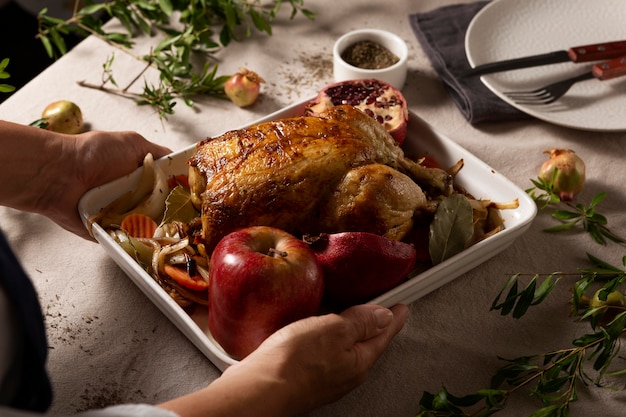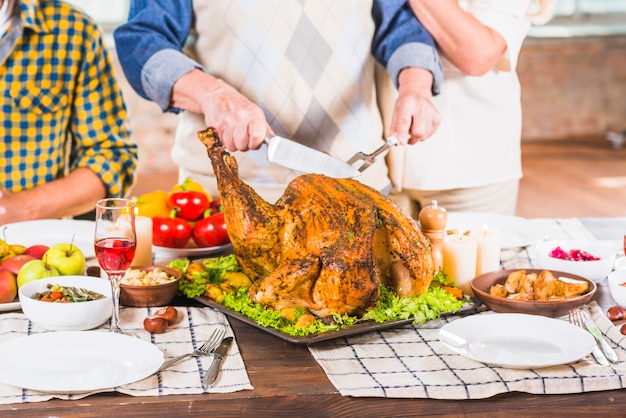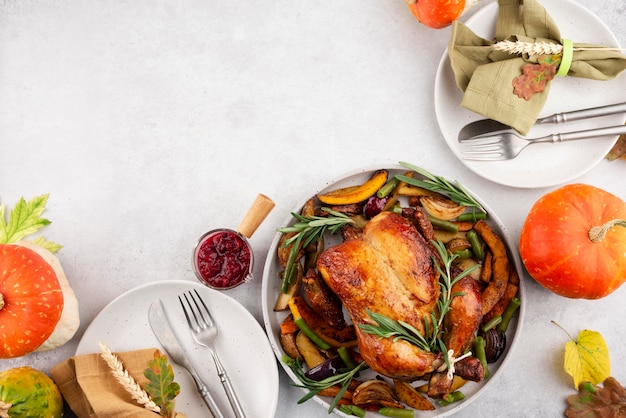You've got a 16lb turkey, a centerpiece for your festive feast, and you're wondering just how long it's going to take to roast. It's a question that echoes in kitchens across the land, especially when the holidays roll around. Trust me, I get it. roasting a turkey, especially one this size, can feel like a daunting task, especially if you're a bit of a kitchen novice. But don't fret! I'm here to walk you through the whole turkey-roasting experience, from figuring out cooking times to sharing my own triumphs and mishaps along the way. It's going to be a bit of a journey, filled with tips, tricks, and a sprinkle of personal anecdotes to make it feel like a cozy conversation over a cuppa.
(Part 1) The Basics of turkey roasting

Let's start with the fundamentals. You have your turkey, your trusty oven, and your favorite recipe. Before you start whipping up gravy, we need to figure out how long this magnificent bird needs to spend in the oven. The truth is, there's no magic number. It all depends on a few factors, like the size of your turkey, your oven's temperature, and even whether it's stuffed or not.
How Long Does a 16lb Turkey Need to Roast?
A 16lb turkey is a hefty bird, and it needs a good amount of time to cook through. A general rule of thumb is that a 16lb turkey will take about 4 to 5 hours to roast at 325°F (160°C). But remember, this is just a starting point. You might need to adjust the roasting time based on your specific oven and recipe.
To give you a better sense of timing, here's a table with roasting times for different turkey sizes at 325°F (160°C):
| turkey weight (lbs) | Roasting Time (hours) |
|---|---|
| 8-12 | 3-4 |
| 12-16 | 4-5 |
| 16-20 | 5-6 |
But remember, it's always better to err on the side of caution. It's always a good idea to check the turkey's internal temperature using a meat thermometer to ensure it's cooked through. This brings me to another crucial point...
The Importance of Temperature
Temperature is paramount when roasting a turkey. We all know how important it is to cook meat thoroughly, and turkeys are no exception. An undercooked turkey can be dangerous, so we need to ensure it reaches an internal temperature of 165°F (74°C) to kill any harmful bacteria. You can check the temperature using a meat thermometer. Stick the thermometer into the thickest part of the thigh, making sure it doesn't touch any bone. If the temperature isn't high enough, keep cooking until it reaches the desired temperature.
(Part 2) Turkey roasting tips and Tricks

Now that we've covered the basics, let's dive into some tips and tricks to make your turkey roasting experience a breeze. Remember, confidence in the kitchen is key! You've got this.
Brining the Turkey: A Game Changer
Brining is a technique that involves soaking the turkey in a salt water solution. It's a game changer for keeping the turkey moist and juicy. You can do this in the fridge, or even use a large container. There are lots of different brining recipes online, but a simple one consists of 1 cup of salt dissolved in 1 gallon of water. Soak the turkey in the brine for 12-24 hours before roasting. I find it helps make the turkey more flavorful and succulent, and I always recommend it!
Stuffing the Turkey: A Delicious Tradition
Stuffing can be a bit of a controversial topic when it comes to turkey roasting. Some people swear by it, while others prefer to stuff it separately. My personal opinion? Stuffing the turkey is a delicious tradition, but it can be a bit tricky. You need to make sure the stuffing is cooked thoroughly, which can be a bit of a challenge when it's inside the turkey. If you do stuff your turkey, make sure the stuffing is packed loosely and that it doesn't touch the raw meat. And, most importantly, make sure it reaches an internal temperature of 165°F (74°C) before serving.
Don't Overcook the Turkey: A Recipe for Disaster
This is something I've learned from experience. There's nothing worse than a dry, overcooked turkey. The key is to cook it just until it's cooked through. You'll know it's done when the juices run clear when you cut into the thickest part of the thigh. And, as I mentioned before, make sure the internal temperature reaches 165°F (74°C).
Resting the Turkey: A Moment of Patience
Once the turkey is out of the oven, let it rest for at least 15 minutes before carving. This allows the juices to redistribute, making the turkey even more juicy and flavorful. This is a moment of patience, but it's crucial for a delicious outcome.
(Part 3) The Joys of Turkey Roasting: A Celebration of Flavor and Togetherness

Now, let's get a little sentimental about this whole turkey roasting experience. There's something truly special about a roasted turkey, especially when it's surrounded by loved ones. It's a centerpiece, a symbol of warmth and good cheer.
The Smell of roast turkey: A Kitchen Symphony
The aroma of a roasted turkey filling your home is intoxicating. It's a comforting scent, a reminder of festive gatherings and warm memories. It's like a welcome hug from the kitchen, filling the entire house with a sense of anticipation and joy. It's a symphony of flavor, wafting through the air, inviting everyone in.
The Presentation: A Culinary Masterpiece
A roasted turkey looks magnificent! It's a masterpiece, a testament to your culinary skills. From the golden-brown skin to the glistening gravy, it's a feast for the eyes as well as the stomach. I always get a little thrill when I see a beautifully roasted turkey, ready to be carved and shared with loved ones.
The Sharing: A Celebration of Togetherness
There's something special about carving a turkey and sharing it with people you love. It's a symbol of togetherness, of celebrating life's simple pleasures. And, let's be honest, a juicy slice of turkey with all the trimmings is just plain delicious!
(Part 4) Dealing with a Leftover Turkey: Creative culinary adventures
So, you've got a beautiful roasted turkey, and you've enjoyed a delicious meal with your loved ones. Now, what do you do with the leftovers? Don't worry, there's plenty you can do with a leftover turkey!
turkey sandwiches: A Classic Comfort
This is a classic way to use up leftover turkey. Just pile some turkey slices onto bread, add some mayonnaise, lettuce, and tomato, and you've got a delicious sandwich.
turkey soup: A Warm and Hearty Treat
Turkey soup is another great way to use up leftover turkey. You can make a simple broth with the turkey bones and vegetables, then add the leftover turkey meat to the soup. It's a comforting and flavorful way to stretch your meal.
turkey salad: A Light and Refreshing Option
Turkey salad is a light and refreshing way to use up leftover turkey. Just chop up the turkey, add some mayonnaise, celery, onion, and your favorite herbs, and you've got a tasty salad.
Turkey Shepherd's Pie: A Hearty and Delicious Dish
For a more filling meal, try making turkey shepherd's pie. Simply layer mashed potatoes over a mixture of leftover turkey, vegetables, and gravy. It's a delicious and comforting dish that's perfect for a cold night.
(Part 5) The Turkey Roasting Journey: My Experiences
Now, let me tell you about some of my own experiences with turkey roasting. Over the years, I've had my share of triumphs and a few mishaps, too. But, hey, that's all part of the fun!
The First Time I Roasted a Turkey: A Moment of Triumph
I remember the first time I roasted a turkey, I was so nervous! I had this giant bird in the oven, and I was convinced I was going to ruin it. But, you know what? It turned out perfectly! The skin was crispy, the meat was juicy, and everyone raved about it. It was a total victory!
The Time I Forgot to Baste: A Lesson Learned
One year, I got caught up in the festive chaos and forgot to baste the turkey. Let me tell you, it was a disaster! The turkey ended up being dry and tough. It was a lesson learned the hard way, and I've never forgotten to baste since.
The Turkey That Fell Apart: A Culinary Challenge
Another time, I overcooked the turkey so badly that it literally fell apart when I tried to carve it. It was a total mess! But, I learned from that experience, too. Now, I make sure to check the temperature of the turkey regularly and take it out of the oven as soon as it's cooked through.
(Part 6) Understanding the Science of Turkey Roasting: A culinary journey
Now, let's get a little more technical. There's actually some science behind turkey roasting, and understanding it can help you achieve the perfect bird.
The Maillard Reaction: A Symphony of Flavor
The Maillard reaction is a chemical reaction that occurs when sugars and amino acids are heated. It's responsible for the browning of the turkey skin and the development of its delicious flavour. To encourage the Maillard reaction, make sure the turkey skin is dry before roasting. This helps create that crispy, golden-brown skin that everyone loves.
The Importance of Moisture: Keeping Your Turkey Juicy
Moisture is crucial for a juicy turkey. The turkey loses moisture as it cooks, so it's important to keep it moist. You can do this by brining the turkey, basting it regularly, and even covering it with foil for part of the cooking time. This helps lock in the moisture and prevents the turkey from becoming dry.
The Impact of Oven Temperature: Finding the Sweet Spot
Oven temperature also plays a role in turkey roasting. A higher temperature will cook the turkey faster but can also lead to dryness. A lower temperature will cook the turkey more slowly, but it will also be more likely to remain moist. Finding the sweet spot is key to achieving the perfect balance between cooking time and moisture.
(Part 7) turkey roasting tips for a Stress-Free Experience
Let's wrap this up with a few more tips to make your turkey roasting experience as stress-free as possible.
Prepare the Turkey in Advance: Set Yourself Up for Success
One of the best things you can do is prepare the turkey in advance. This can include brining, stuffing, and even patting the skin dry. By doing this the day before, you can reduce the stress on the day of the roast. It's like setting the stage for a culinary performance.
Use a Thermometer: Your Culinary Compass
A meat thermometer is your best friend when it comes to turkey roasting. It takes the guesswork out of cooking and ensures that your turkey is cooked through and safe to eat. It's your culinary compass, guiding you to a perfectly cooked turkey.
Don't Be Afraid to Ask for Help: A Community of Culinary Support
If you're feeling overwhelmed, don't be afraid to ask for help. Ask a friend, family member, or even a chef to help you with the turkey roasting. The kitchen is a place for collaboration and support.
Enjoy the Process!: A Celebration of Culinary Delights
Most importantly, enjoy the process! Turkey roasting is a tradition, a celebration, and a chance to share good food and good company. So, relax, have fun, and let the aroma of roasted turkey fill your home.
(Part 8) FAQs: Answers to Your Most Pressing Questions
I know, there are always so many questions! Let's address some common ones about turkey roasting.
How do I know if my turkey is cooked?
The best way to know if your turkey is cooked is to use a meat thermometer. Insert the thermometer into the thickest part of the thigh, making sure it doesn't touch any bone. The turkey is cooked when the internal temperature reaches 165°F (74°C). It's the golden rule for safe and delicious turkey.
How long should I let the turkey rest before carving?
You should let the turkey rest for at least 15 minutes before carving. This allows the juices to redistribute, making the turkey even more juicy and flavorful. Patience is key for a truly succulent and delicious outcome.
What should I do if my turkey is dry?
If your turkey is dry, there's not much you can do to fix it. But, you can make it more moist by adding gravy or cranberry sauce. These additions will help create a more flavorful and satisfying experience.
What if I don't have time to brine my turkey?
If you don't have time to brine your turkey, there are other ways to keep it moist. You can try basting it regularly with butter or broth. This helps lock in moisture and keep the turkey juicy.
What's the best way to store leftover turkey?
Store leftover turkey in the fridge in an airtight container. It will last for 3-4 days. Make sure to refrigerate it promptly to ensure food safety.
Everyone is watching

Prime Rib Roast Cooking Time Chart: Per Pound Guide
Cooking TipsPrime rib roast. Just the name conjures images of lavish dinners, crackling fires, and hearty laughter. It’s ...

How Long to Bake Potatoes in the Oven (Perfect Every Time)
Cooking TipsBaked potatoes are a staple in my kitchen. They're incredibly versatile, delicious, and surprisingly easy to m...

Perfect Rice Every Time: The Ultimate Guide to Cooking Rice
Cooking TipsAs a self-proclaimed foodie, I've always been a bit obsessed with rice. It's the foundation of countless cuisi...

The Ultimate Guide to Cooking Asparagus: Tips, Techniques, and Recipes
Cooking TipsAsparagus. The mere mention of this spring delicacy conjures up images of vibrant green spears, crisp and burs...

Ultimate Guide to Cooking the Perfect Thanksgiving Turkey
Cooking TipsThanksgiving. Just the word conjures up images of overflowing tables laden with delicious food, the scent of r...
